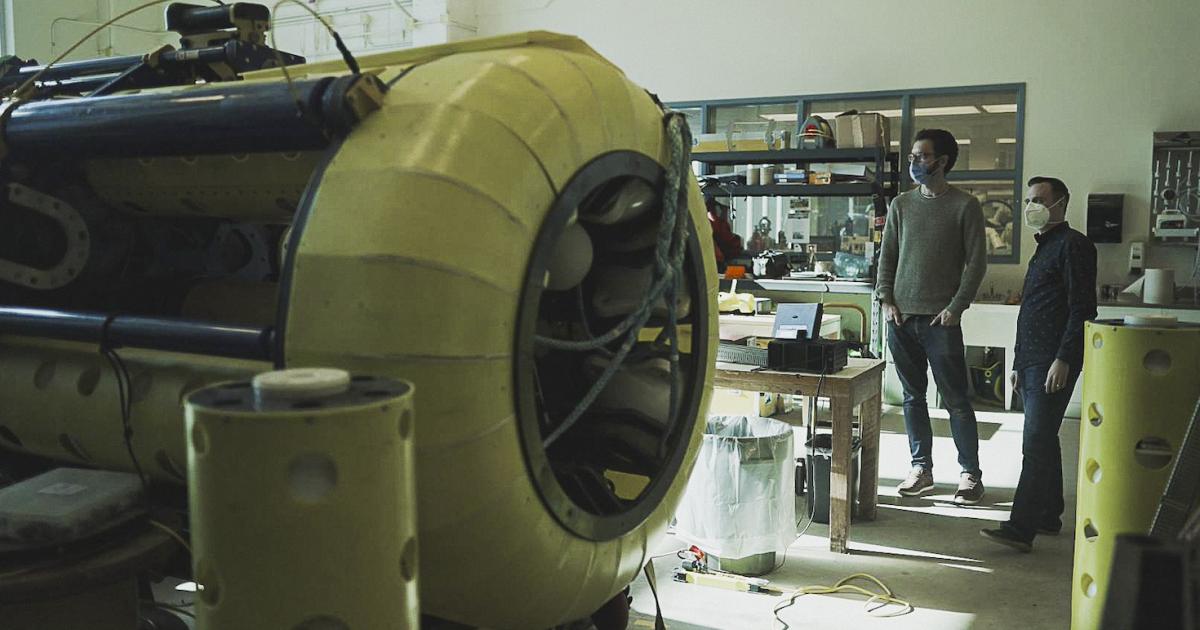
Since 2019, Shopify has invested close to $55 million in 40 startups that have developed methods for removing carbon dioxide from the air — from direct air capture devices to spreading crushed rock on farmland for faster soil absorption.
Those relationships are part of the $6.7 billion e-commerce company’s strategy to offset its emissions without buying traditional carbon offsets. Shopify’s initial bets have removed 84,400 metric tons of CO2 so far, said Shopify head of sustainability Stacy Kauk in a mid-December update.
That’s a small amount, considering the gigatons in reductions needed to slow temperature increases and the spikes in emissions caused by a company the size of Shopify. But it’s almost double what Shopify reported in early 2023, and the company was part of at least two high-profile deals since May that will remove 254,000 metric tons more. Those new credits will start being delivered this year.
Shopify’s investments go through its Sustainability Fund, set up to support renewable energy procurement, green building leases near public transportation hubs and carbon sequestration that stands the test of time. The fund, with board-level approval, supports "intentionally overpaying" for projects that sequester carbon to boost corporate interest in the market, as Shopify CEO Tobias Lütke said at the launch. Shopify is also part of Frontier, a group of corporations committing $1 billion to getting more projects off the ground.
"Carbon removal is a big, gnarly problem that can’t be solved by Shopify and other corporate buyers alone," Kauk said in December. "We’re doing our best to kickstart the market, but it will take way more than just us."
GreenBiz spoke with Kauk to dig deeper into the strategy and discuss what other companies can learn from Shopify’s experiments over the past four years. Here are the big takeaways.
3 proof points before committing to a carbon removal project
How does Shopify know whether a successful pilot is worth scaling into a commercial project? Kauk’s team uses these tests:
- Understand the financial model
Is there clarity on potential maintenance costs and factors that could affect operational uptime, such as adverse weather conditions? - Know the unit economics
Will the facility deliver enough capacity to make an investment worthwhile? The company needs to know how the price curve for removing a ton of carbon will change between now and 2050. "Make sure that it's something that's going to be bankable, that's going to get capital coming in from other places, so that the facility can be built and operated," Kauk said. - Will it have staying power?
Will it make a meaningful impact two decades from now? That includes factors such as the potential evolution of the technology and how much physical space it requires.
A big risk today: Disparate verification methodologies
Questions about the reliability and durability of claims for carbon credits centered on emissions avoidance, such as protecting tropical rainforests, have underscored the need for better verification methods and standards of carbon removal solutions. For many sustainability professionals, the high-profile controversy over claims related to a massive forest conservation project in Zimbabwe are top of mind.
Kauk said there is a lot of "uncertainty in terms of how much is actually being removed and permanently stored. We just don't know enough yet." Some companies Shopify is working with, such as CarbonCure, which stores captured CO2 in cement, are working with established registries, such as Verra, to develop verification methodologies. "Right now, we have to do a lot of the review ourselves … we get all of the data and we check the work and compare it against the methodology, so that's not a very scalable approach at all," said Kauk.
Shopify is pushing for standards, such as the one published by Isometric on Dec. 21, which focus on monitoring, reporting and verifying emissions removed by direct air capture systems. Isometric is also working on verification methods for things such as enhanced rock weathering technologies.
A controversial solution with huge potential: ocean capture
Shopify’s team has considered many carbon removal techniques. One that has "massive potential" is ocean alkalinity enhancement, Kauk said. This method increases the sea’s alkalinity by adding minerals such as olivine and basalt to beaches or the water’s surface. The chemicals convert dissolved carbon dioxide in seawater into carbonates and bicarbonates, which trap more atmospheric CO2 over long periods of time. The theory makes some scientists nervous because it is not clear whether speeding up ocean alkalinization might have harmful unintended consequences on the marine environment.
Shopify is working with three startups in this space: Running Tide, which grows kelp and sinks it to the seafloor to store captured carbon; Planetary Tech, which adds an alkaline solution to ocean water; and Captura, which uses electrochemistry to filter CO2 out of seawater.
"We need to find a framework that makes all of the stakeholders around these kinds of projects comfortable, because we have to leverage the ocean, because it just takes away a lot of the issues that we have with other kinds of carbon removal, such as land use change [and] electricity usage," Kauk said. "Those cost factors come way down when we use the ocean."
Read more about Shopify’s carbon removal strategy in this edited transcript of the interview.
- SEO Powered Content & PR Distribution. Get Amplified Today.
- PlatoData.Network Vertical Generative Ai. Empower Yourself. Access Here.
- PlatoAiStream. Web3 Intelligence. Knowledge Amplified. Access Here.
- PlatoESG. Carbon, CleanTech, Energy, Environment, Solar, Waste Management. Access Here.
- PlatoHealth. Biotech and Clinical Trials Intelligence. Access Here.
- Source: https://www.greenbiz.com/article/shopify-3-lessons-investing-55-million-27-carbon-removal-startups
- :has
- :is
- :not
- $1 billion
- $6.7 billion
- $UP
- 000
- 2019
- 2050
- 27
- 40
- 400
- 7
- 84
- a
- About
- actually
- adding
- Adds
- adverse
- affect
- against
- AIR
- All
- almost
- alone
- also
- amount
- an
- and
- approach
- approval
- ARE
- around
- AS
- At
- atmospheric
- away
- bankable
- BE
- Beaches
- because
- before
- being
- BEST
- Bets
- Better
- between
- Big
- Billion
- Bloomberg
- boost
- Building
- built
- but
- buyers
- Buying
- by
- CAN
- Capacity
- capital
- capture
- captured
- carbon
- carbon credits
- carbon dioxide
- Carbon Offsets
- Carbon Sequestration
- caused
- cement
- centered
- ceo
- change
- check
- chemicals
- claims
- clarity
- clear
- Close
- co2
- come
- comfortable
- coming
- commercial
- committing
- Companies
- company
- Company’s
- compare
- conditions
- CONSERVATION
- considered
- considering
- controversial
- convert
- Corporate
- Corporations
- Cost
- Costs
- could
- Credits
- curve
- data
- Deals
- dec
- decades
- deeper
- deliver
- delivered
- develop
- developed
- Devices
- DIG
- direct
- discuss
- disparate
- do
- does
- doing
- don
- double
- down
- durability
- e-commerce
- Early
- electricity
- electricity usage
- Emissions
- energy
- enhanced
- enough
- Environment
- established
- Ether (ETH)
- evolution
- experiments
- Facility
- factors
- far
- faster
- filter
- financial
- Find
- Focus
- For
- forest
- four
- Framework
- from
- fund
- get
- getting
- Go
- going
- Green
- Ground
- Group
- Grows
- harmful
- Have
- head
- here
- high-profile
- How
- HTTPS
- Hubs
- huge
- Impact
- in
- includes
- Increases
- initial
- intentionally
- interest
- into
- invested
- investing
- investment
- Investments
- issues
- IT
- ITS
- jpg
- just
- Know
- Land
- LEARN
- least
- Lessons
- Leverage
- Long
- Lot
- maintenance
- make
- MAKES
- many
- Marine
- Market
- massive
- May..
- McKinsey
- meaningful
- method
- methodologies
- Methodology
- methods
- metric
- million
- mind
- minerals
- monitoring
- more
- much
- Near
- Need
- needs
- New
- NIH
- now
- ocean
- of
- off
- offset
- offsets
- on
- ONE
- operated
- operational
- or
- Other
- our
- ourselves
- out
- over
- part
- past
- periods
- permanently
- physical
- pilot
- Places
- plato
- Plato Data Intelligence
- PlatoData
- points
- potential
- power
- price
- Problem
- procurement
- professionals
- project
- projects
- proof
- protecting
- public
- public transportation
- published
- Pushing
- reductions
- registries
- related
- reliability
- removal
- remove
- Removed
- removing
- Renewable
- renewable energy
- Reported
- Reporting
- requires
- review
- right
- Risk
- Rock
- s
- Said
- scalable
- scaling
- scientists
- sequestration
- set
- Shopify
- since
- Size
- slow
- small
- So
- so Far
- soil
- solution
- Solutions
- solved
- some
- something
- Space
- spikes
- stakeholders
- standards
- stands
- start
- Startups
- staying
- store
- stored
- stores
- Strategy
- successful
- such
- support
- Supports
- sure
- Surface
- Sustainability
- Systems
- T
- Take
- Takeaways
- takes
- team
- techniques
- Technologies
- Technology
- terms
- test
- tests
- than
- that
- The
- theory
- There.
- These
- things
- this
- this year
- those
- three
- Through
- time
- to
- today
- Ton
- tons
- top
- traditional
- Transcript
- transportation
- two
- Uncertainty
- unit
- uptime
- us
- Usage
- use
- uses
- Verification
- verifying
- very
- was
- Water
- Way..
- we
- Weather
- What
- when
- whether
- which
- will
- with
- without
- Work
- working
- worth
- worthwhile
- year
- years
- yet
- zephyrnet
- Zimbabwe









